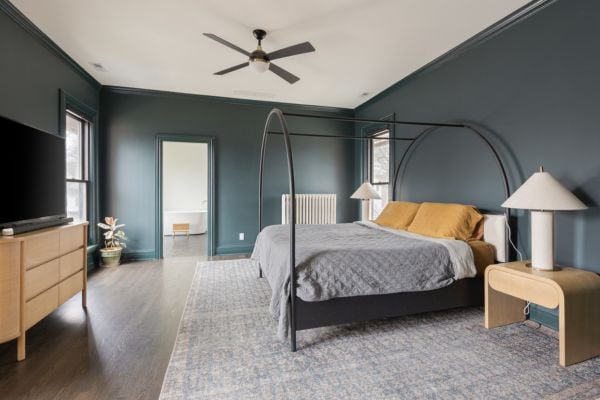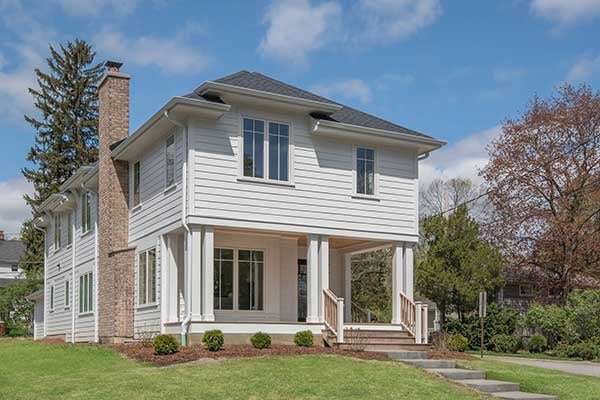5 Steps to a Seamless Expansion: Tips from Home Addition Contractors
April 21, 2025 •Brian Hogan

A home addition is one of the most meaningful and impactful types of home remodeling projects. With an addition, you get more space that you can design to your liking, perfectly adapted to your needs and style preferences.
For complex home renovations like an addition, getting started on the right foot can reduce stress, save money, and increase your satisfaction with the final project.
We've been home addition contractors for over 25 years, and we've helped hundreds of clients craft their dream homes by designing and building an addition. In today's post, I'll draw on our team's experience to offer practical advice about the steps involved in getting started envisioning and planning your home addition.
Step 1: Determine Your Project Goals
You only want to embark on a big project like a home or room addition if you have a clear idea of what you hope to achieve. At the very beginning of this process, you can start to refine a vision of how a home addition would enhance everyday life for you and your family.
Some of the questions that can help draw out your ideas include:
-
How do you expect to use the new space created during a home addition?
-
What's missing from your existing home that could be addressed with an addition?
-
How will a home addition change the way you use your existing home?
-
What must be included in a home addition for you to be satisfied with the result?
Clarifying your big-picture goals is an important first step that enables you to consider all of the details that are necessary for your home remodeling project to be a success. These goals can serve as a point of reference throughout the planning and design process.
Step 2: Think Through Each Space
In most cases, a home addition project doesn't simply tack a new section onto your house. Various existing spaces are usually connected to or impacted by the addition, which gives you an opportunity to think more holistically about upgrading your home.
During a home addition, you often need to make structural modifications to your house, which means removing or moving load-bearing elements. Although this adds complexity, it also creates all sorts of possibilities for changing your layout and the corresponding plumbing, electrical, and HVAC infrastructure.
For that reason, we suggest that you take the time to go room by room, considering what elements are important within the addition itself and in existing parts of your home.
We find that it helps to grab a pen and paper and make notes for each room, including any "must haves," "nice-to-haves," and "absolutely-don't-wants."
Living Room Remodeling
.png?width=600&height=400&name=Living%20Room%20Full%20with%20arched%20entry%2c%20sage%20green%20walls%2c%20light%20wood%20floors%2c%20a%20natural%20wood%20wet%20bar%2c%20a%20framed%20fireplace%20in%20white%20with%20television%20and%20sconces%20(2).png)
Some home additions are designed to add an entirely new living room or family room where you can spend time with your family or entertain guests. In other cases, a home addition presents a chance to upgrade your current living room.
Some things to think about with living room remodeling include:
-
How you anticipate the room being used after the project is complete
-
The floor plan, including whether it's organized around a central focal point, like a TV
-
The placement of electrical outlets, which is increasingly important for charging devices and plugging in smart home components
-
Windows, natural light, and interior light fixtures
-
Flooring
-
Furniture
Kitchen Remodeling

For homeowners who love to cook and entertain, an addition can be used to create space on the main floor for a bigger and upgraded kitchen, which often feels like a totally new kitchen.
With this type of kitchen remodeling project, you have the chance to change the layout, including things like adding a kitchen island. You can also consider other improvements, such as new cabinets, countertops, appliances, flooring, sink, faucet fixtures, and other little details that make your kitchen more dynamic, functional, and visually stunning.
Bathroom Remodeling

Many home additions include at least one bathroom, especially if a bedroom is also being added. The choices you make in the bathroom's design often depend on whether the bathroom is part of a new primary suite, guest or in-law suite, kid's living area, or other type of addition.
If you expect the bathroom to be used frequently, it makes sense to invest in design elements that are optimized for convenience and everyday use. Some factors to consider include:
-
Do you want a walk-in shower or a tub-shower combo?
-
If you have a walk-in shower, do you also want a freestanding bathtub?
-
Do you need a linen closet or other storage in the bathroom?
-
Will two people use the bathroom, making a double vanity more appealing?
If the addition is going to be adjacent or connected to an existing bathroom in your home, you can also consider these questions as they relate to a potential bathroom remodeling project to do along with the addition itself.
Bedroom Remodeling

If you're adding a bedroom as part of your home addition, you'll want to think about who will use it and how often. For a primary suite, you should be ready to go all out to make it perfect. If it's a guest suite for infrequent use, you may not need to splurge on every last detail. That said, since you're building it from scratch, it's always worth making the layout and design top-notch so that you have an impressive end result.
Step 3: Don't Ignore the Exterior

It's easy to focus on what an addition can do for the interior of your home, but you shouldn't ignore the exterior. The design and materials you choose should complement the existing structure, which can maintain or even enhance your home's curb appeal. Beyond visual attractiveness, these choices can affect things like insulation and energy costs.
Step 4: Set a Ballpark Budget
The next step is to start getting a ballpark idea of your project budget. This can be tricky, especially since additions involve a diverse range of work. However, as a starting point, focus on two numbers -- what you want to spend and what you're willing to spend.
You don't have to share these numbers with a contractor. Instead, as you get quotes and bids, you can calibrate to see if your numbers are realistic. If so, you can move ahead and start focusing on the specifics of the project. If not, you may need to revisit either your budget or the scope of the project.
See Also: Our Additions & Whole House Pricing Guide
Step 5: Choose Your Contractor Carefully

A critical step in any successful home addition is finding the right contractor to get the job done. Additions are not simple projects, and not every general contractor is fit for the job.
In fact, a problem we often see people run into is hiring someone who does a wonderful job on smaller projects but lacks experience as a home addition contractor.
We always recommend meeting with different contractors and getting multiple bids. That lets you make some clear comparisons, and not only on price. You also want to look at and compare a contractor's portfolio and their references. You should also try to get a sense of their project management skills and how they communicate. You'll have to work closely with them over several months, so don't underestimate the importance of clear and honest communication.
It's also a good idea to get at least one fixed-price bid. With this type of contract, you are protected from the risk of cost overruns, which often means that you actually save money once all the work is complete.
Getting Started on Your Home Addition
If you're starting to take steps toward a home addition, our firm would welcome the opportunity to meet with you.
For more than 25 years, Hogan Design & Construction has been serving the greater Chicago area, including Geneva and Naperville. Home remodeling for us is about superior craftsmanship and treating your house as if it were our own home.
Our professional services include both design and construction, which means we carefully manage the process and work hand-in-hand with you from the earliest brainstorming stages through putting the final touches on your addition.
We invite you to contact us to schedule an appointment, and, in the meantime, you can see examples of our high-quality work in our portfolio, and you can also learn more about us and our process.

